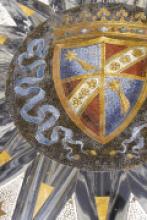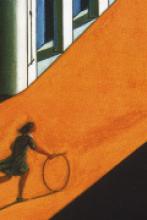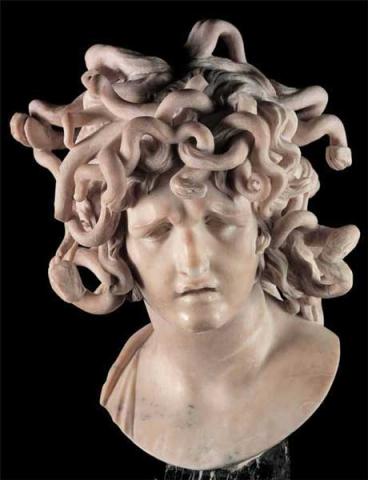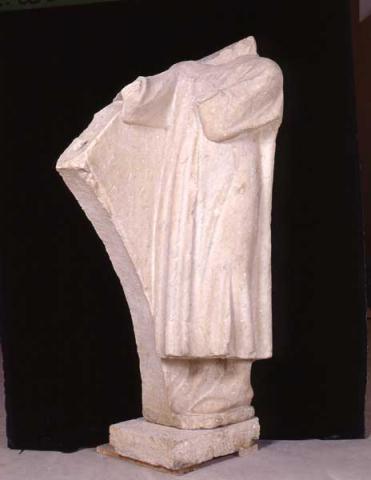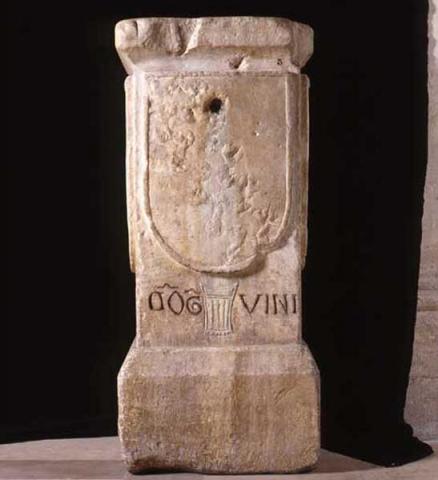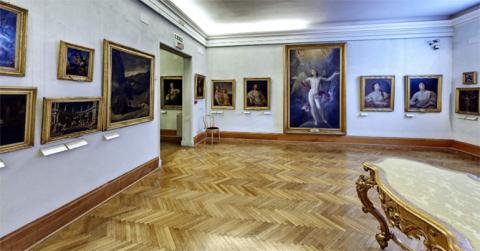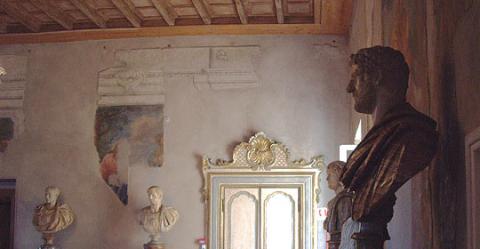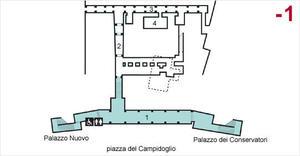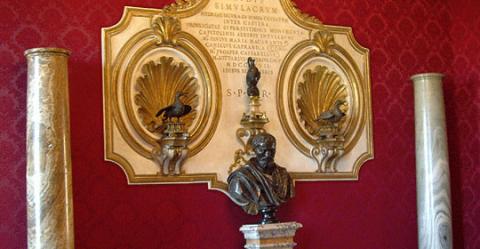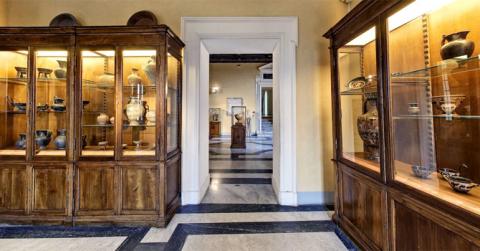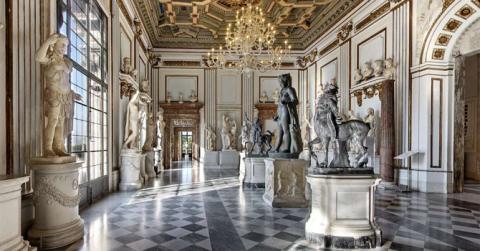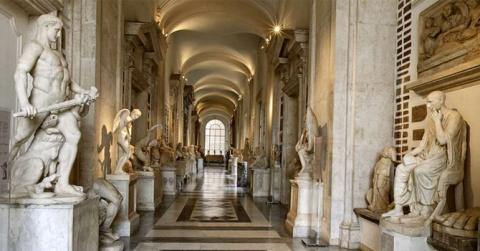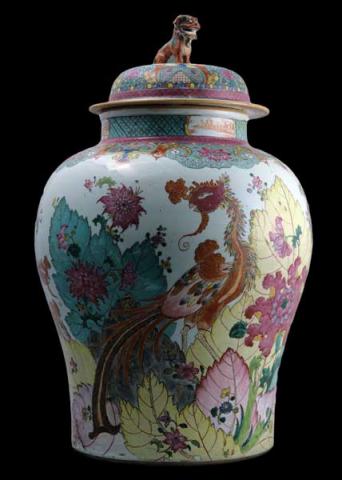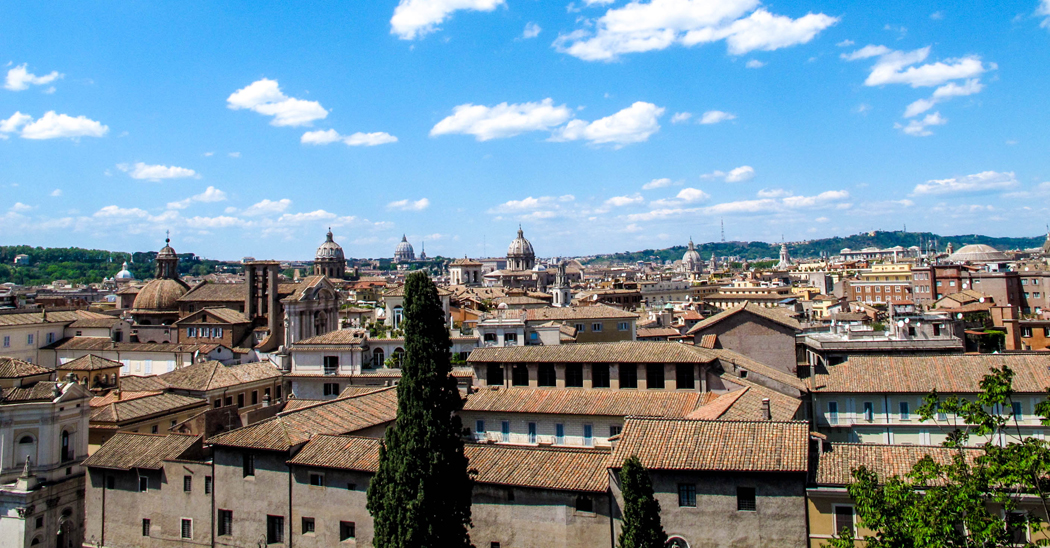Banner of St. George
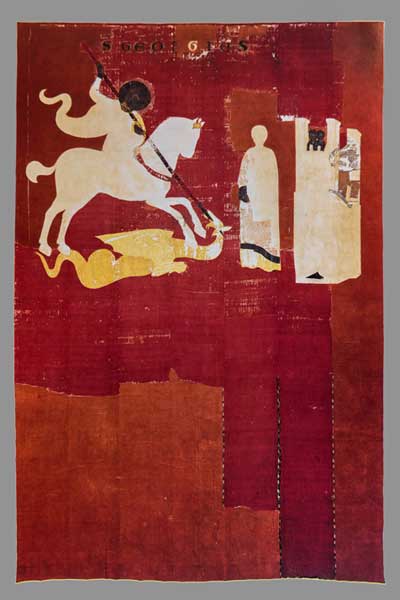
The Banner of Saint George is the oldest example of a flag in Italy. Originally kept in Rome in the Basilica of San Giorgio al Velabro, where Pope Zachary had the saint's skull relic brought in the 8th century. It was hung from a horizontal pole and exhibited in the civil and religious processions that marked the salient moments of the life of the city.
The banner was probably commissioned by Jacopo Caetani Stefaneschi (Rome approx. 1270 - Avignon 1343), titular cardinal of the basilica of San Giorgio al Velabro from 1295 to 1301. It is made of thin red silk and adorned with embroidery, applied elements in silver, gilded and painted leather. It preserves traces of the depiction of the most famous episode in the life of Saint George, taken from the mid-13th century Legenda Aurea by Jacopo da Varagine, that is the killing of the dragon and the liberation of the princess. Some original elements of the scene in the upper part have been reconstructed: Saint George on a horse hits to the ground and pierces a winged dragon with a long spear before the princess, while the girl's parents are looking out and watching the scene, from the battlements of the towers of a distant stylized castle. The inscription in Gothic capital letters: "S(anctus) Geor(g)ius" runs at the top, in the center, while the lower hem ends with long rectangular strips, or "tails", edged with multi-colour trimmings. Originally, the refined manufacture of the figures on the red silk background, made with multi-colour silk inserts, allowed to see the scene from both sides. Transferred from the Velabro to the Vatican at the beginning of the 20th century, the banner has come to us thanks to the delicate preserving intervention it underwent at the Vatican Museums in 1934. The precious relic was donated to the Municipality of Rome in 1966 by Pope Paul VI, on the occasion of his official visit to the Campidoglio. In 1992 it was entrusted to the High Institute for Preservation and Restoration of Rome for a complex restoration.
Masterpieces of the hall
The hall
The Hall of the sixteenth century Capitoline Archive in the Palazzo dei Conservatori houses the new Hall of the Middle Ages of the Capitoline Museums, with a striking exhibition of the honorary monument of Charles I of Anjou. In the room there are also other works that help to illustrate the history of the Capitoline in the Middle Ages.

















